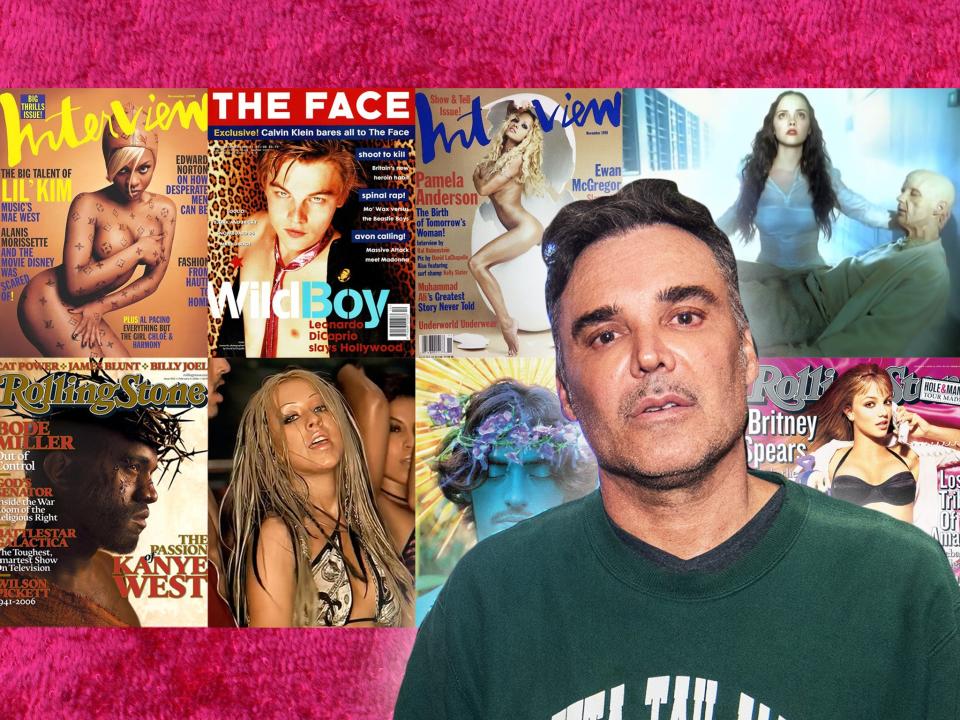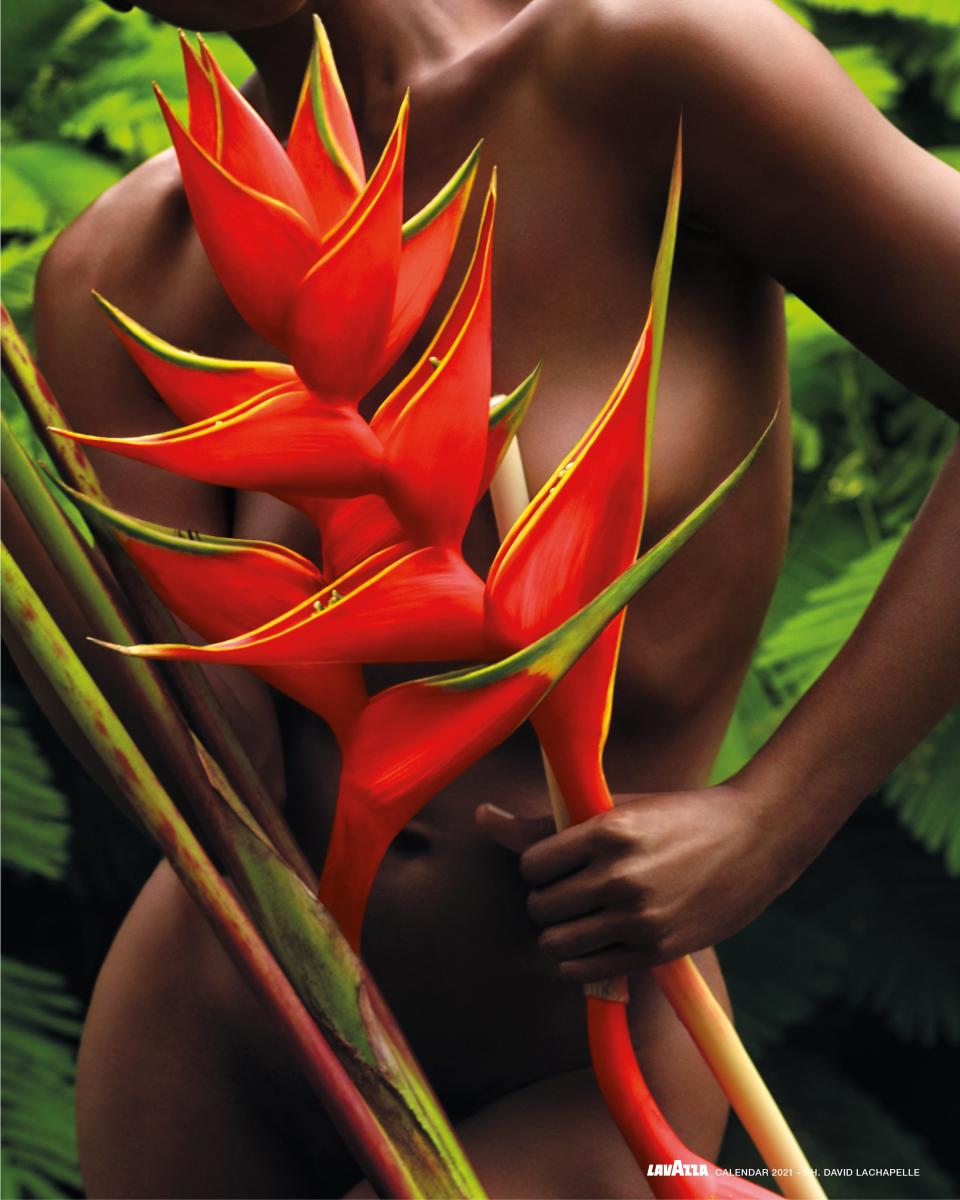David LaChapelle: ‘There aren’t people like Britney and Paris Hilton in the zeitgeist anymore’

Visually, the turn of the millennium arrived with a bang. Y2K superstars wore crotchless trousers and Barbie Dream House pink, with David LaChapelle memorialising it all on camera. The legendary photographer, artist and filmmaker was the era’s Forrest Gump figure; an elusive presence passing through in the background, responsible for its most provocative imagery – Kanye as Jesus, Britney with a Teletubby, the sex club slash public toilet that was Christina Aguilera’s “Dirrty” video. LaChapelle found muses in the era’s most fascinating exhibitionists, from Pamela Anderson and Paris Hilton to performance artist Amanda Lepore. His glorious pile-ups of stardom, carnality, fashion and art, of every possible taste level colliding at once, defined late 1990s and early 2000s celebrity. Then, as if he sensed it was late and the party was on its last legs, LaChapelle got out.
“That was a definite time in my life,” he laughs, his chuckle nodding towards naughtiness unspoken. “I look at it as a very distinct chapter. But I’m in a new one now.”
LaChapelle, 57, is at home on the island of Maui, in Hawaii, sitting relaxed on a balcony while lush palm trees sway gently in the breeze. His organic farm is nearby, and he is enveloped by birdsong, the artist seeming to exist in one of the earthy fantasy realms he so often depicts in his modern work. He’s emerged from the jungle to participate in a new calendar, produced by the coffee maker Lavazza, which finds 13 artists interpreting the theme of shared humanity. His image is a tight close-up of a nude woman, her body partly hidden behind a tropical flower.
“I wanted to show intimacy between the flower and her skin and the connection between human beings and nature,” LaChapelle explains. “Sometimes living in cities can make you feel very disconnected from nature, and it’s easy to forget that we’re actually a part of it. Living off-grid for 15 years has taught me that we’re part of this huge ecosystem and our choices do matter.”
Two decades ago, LaChapelle was the epitome of metropolitan glam, with the CV to back it up. His biography reads like New York art world folklore. A native of Connecticut, LaChapelle ran away from home at 15, after years of bullying because of his sexuality, and found a haven in early Eighties Manhattan. There he worked as a busboy at Studio 54 before becoming a protégé of Andy Warhol, finding work as a photographer for Warhol’s Interview Magazine. He developed his craft within its pages: loud colours, melodrama, kitsch, and the indulgent contrast of celebrity and the divine. It was an extension of his earliest artistic passions.
“When I was young, I thought I was going to be a painter,” he says. “I always knew I would be an artist of some sort, but I remember being most inspired by the Renaissance and the Enlightenment period. When you see Michelangelo’s nude figures, you see that it’s about the beauty of man and the beauty of nature as proof that God exists. I loved that sentiment.”

Spirituality runs through a large swath of LaChapelle’s work. It’s most notable in his most recent decade of creativity, which bursts with dreamy tableaus, halos and mysticism. But it’s there in his earlier work with celebrities, too – think Titanic-era Leonardo DiCaprio sporting a crown of thorns, or Madonna cradling the sacred heart. In LaChapelle’s music video for Moby’s “Natural Blues”, Christina Ricci is a gothic angel carrying an elderly Moby to the afterlife. “Everytime”, the last of LaChapelle’s officially released video collaborations with Britney Spears, charts a troubled pop star as she transitions from paparazzi-inflicted turmoil to heavenly salvation. The scandalous dirtiness of, well, “Dirrty” leaves some surprised when he opens up about his faith, he says.
“There are just so many bad messengers who have distorted the message,” he says. “I think the new Pope really has it right. Jesus said that the most important thing is love. He said, ‘I’ll give you all these commandments, but the most important one above all else is to love.’”
He continues: “I think we naturally have a longing for something of a spiritual nature in our lives. If we don’t have God, we’ll turn to other things, whether it be career or ambition or drugs and alcohol, or sex or whatever it might be. But it stems from not having faith in anything but the material, I think. And there’s so much more to us than just material things.”
Such values don’t contradict the more salacious examples of his past work, he insists. “Dirrty” remains a landmark in outrageous pop-music sleaze, Aguilera covered in grime, wearing crotchless trousers and interacting with mud-wrestlers, furries and half-naked contortionists. It’s also so knowingly over-the-top that it feels like satire. LaChapelle hasn’t seen the “Dirrty” video in years, but giggles at the memory of it.
“We were just so balls to the wall back then,” he remembers. “We wanted to see how far we could go. But everything I did always had a lightness to it, or a sense of humour. With ‘Dirrty’, even though it was set in this forbidden nightclub, and dirty things went on in it, it wasn’t all shadowy and dark. I’ll see some videos today and I’m just kind of, wow, that’s... dark. There’s no humour or lightness. My work was sexy, but there was always a lot of fun. And I think that comes through when you look at them – that sort of joyfulness and playfulness.”

LaChapelle doesn’t regularly photograph celebrities anymore, only coming out of hibernation for those who particularly inspire him. In 2018, he shot the cover of Travis Scott’s Astroworld album, with Scott appearing as a giant inflatable head at the centre of his own private circus. In January, he was responsible for Lizzo’s flamboyant Rolling Stone cover, which reimagined the singer as a floral space goddess. LaChapelle had no idea the shoot went viral as soon as it was unveiled, in hindsight acting as a last gasp of colour before the world went dark.
“I love doing that kind of work,” he says. “But there’s just a shortage of artists. Look at the Seventies or the Eighties, and all the bands. There’s not even a band right now that everyone is [into]. Whereas in other times we had, like, the rock band, whether it was Nirvana or Guns N’ Roses or Green Day. We don’t seem to have a lot of artists right now, or music that’s inspiring. I think there’s been a creative drought.”
He thinks back to many of the stars he photographed 20 years ago. “Britney and Paris were trailblazers – we don’t have people like that in the zeitgeist anymore. There was nobody like those women. There wasn’t a Lil’ Kim before Lil’ Kim. There wasn’t a Paris Hilton before Paris Hilton. There weren’t people in the world in such a way before.”
For now, he’s inspired by his immediate surroundings. “I feel so lucky to be out here,” he says, gesturing towards the Hawaiian foliage. “Growing up in New York, there were so many different things that influenced me, but here it’s, like, the place where the earth began.” When he’s not working, he can be found studying the trees, or meditating, or swimming in the natural waters. And those unexciting celebrities of the modern era are thousands of miles away, just the way he likes it.
The New Humanity, the 2021 Lavazza Calendar, is available for purchase at Charity Stars, with all raised funds donated to Save the Children Italia
Read More
The pop superfans propelling lost classics back to chart success

